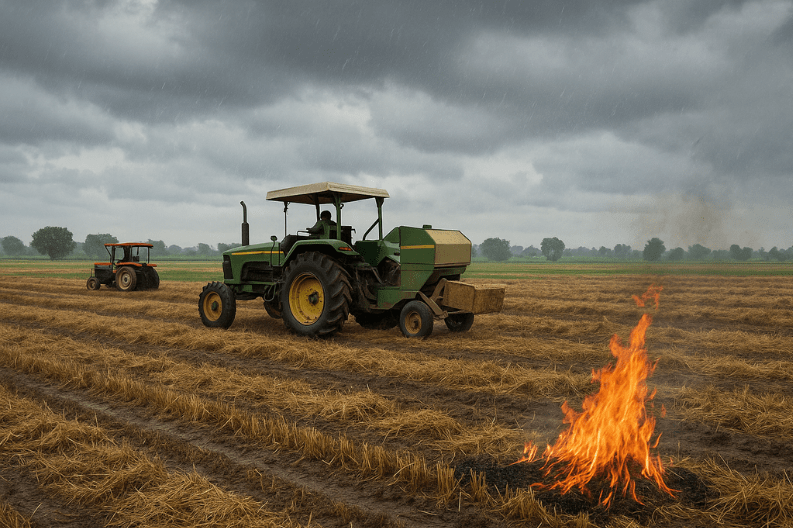Haryana’s stubble burning numbers hit record low this year as the state enters the last 15 days of the burning season. From September 15 to November 15, Haryana recorded only 516 farm fires, a huge drop compared to past years. In 2020, the number reached 3,701, and in 2021 it climbed to 5,724. This dramatic decline has surprised both officials and environmental experts.
Moreover, the usual peak in early November appeared much weaker this year. On November 9, the state saw 67 fires, and on November 11, it recorded 72. However, the spike faded quickly, and the numbers dropped again. Even in late September and early October, cases stayed extremely low. By October 7, the total fires were still under 50. Normally, the count crosses the 3,000 mark by the end of October, as it did in 2021. Yet in 2023, Haryana had barely crossed 300 by that time.
Additionally, this year’s drop is linked not only to improved monitoring but also to weather conditions. Unexpected rainfall and waterlogging damaged the paddy crop, leaving less straw for farmers to burn. This natural shift played a major role in reducing fire activity across the state.
District-level data shows similar trends. For example:
• Ambala recorded 6 cases.
• Kurukshetra had 8.
• Karnal saw 18.
• Fatehabad, once a hotspot with over 700 cases in 2020, ended with only 78.
• Sirsa reported 26.
• Jind recorded the highest number in the state with 152.
Furthermore, experts caution that the decline does not mean the problem is solved. Kurinji Kemanth from the Council on Energy, Environment, and Water explained that partial burning still happens. Some farmers burn small amounts of straw before using CRM machines like Super Seeders. This helps them manage pests and clear fields faster, but it still hurts the environment.
He also urged the government to strengthen awareness efforts. Social media tools like WhatsApp and YouTube can help farmers learn safe farming practices, identify pest attacks, and understand zero-burn options. Additionally, officials need to provide more balers and create storage spaces so that farmers can use stubble as fodder or fuel instead of burning it.
Moreover, the low fire numbers mainly reflect this year’s unusual weather, not a long-term behavior change. Farmers still face challenges such as damaged crops, rising costs, and shifting climate patterns. Because of this, support programs and sustainable solutions remain essential.
In conclusion, Haryana’s stubble burning numbers hit record low, marking the lowest farm-fire total in years. As the season ends, experts say the focus must shift toward long-term solutions that protect the air, the soil, and the future of farming in the state.



